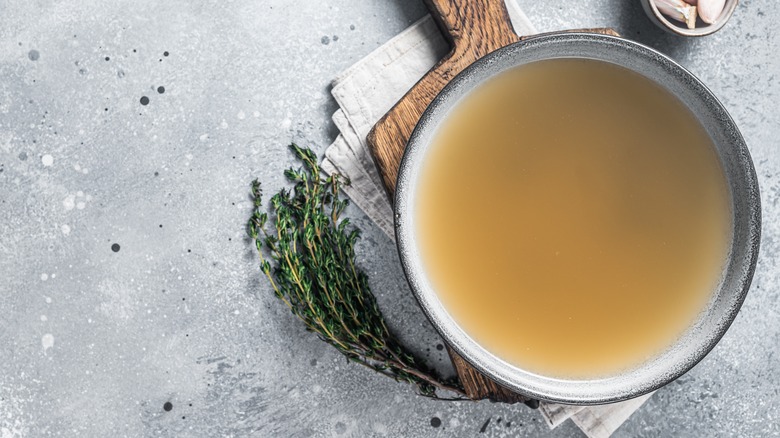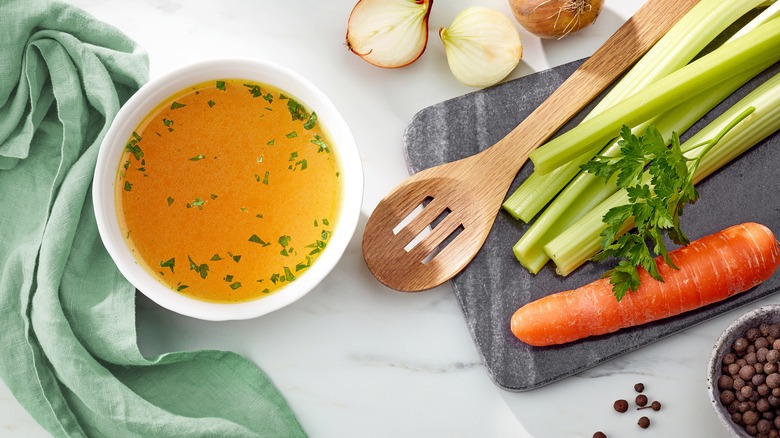Why Chefs Never Buy Pre-Made Chicken And Vegetable Stock
When you're eating out at a restaurant, you might assume that everything is made in the kitchen. But you might actually be surprised by what ingredients high-end restaurants use regularly, like frozen meat and fish from a can. However, if you're at a reputable establishment, you can rest assured that chefs have a plan to make your meal delicious. Still, even when you're serving hundreds of people a night, there are some things that chefs take the time to make from scratch. One of them is chicken and vegetable stock.
Since you can easily pick up chicken or vegetable stock from the grocery store, this might seem like a quick shortcut for dinner. Although it might take a bit of time to make a stock from scratch, it's absolutely worth the effort. As Chef Brad Kilgore told Food and Wine, the benefit of homemade stock is richer and deeper flavors than stock from a box.
Eat This, Not That! spoke with Chef Shawn Matijevich, who explained that the stock you buy in a grocery store isn't true stock. According to Matijevich, when these boxed stocks are made, they need to be heated to high temperatures in order to be shelf-stable, and this is why pre-made stocks have less flavor. Instead of adding stock to your grocery list, here's how to make it at home.
How to make your own chicken or vegetable stock
Even if you're a beginner home cook, making stock is an easy task. BBC Good Food breaks down how to make a great chicken stock. After adding in your chicken bones and covering them with cold water, add your chopped vegetables and herbs, then let the stock simmer on the stove for a few hours. If you're making vegetable stock, just skip the chicken, and be sure not to make the common mistakes when cooking vegetable stock or chicken stock, like skipping the salt or adding potatoes, which will make the stock too thick.
Don't have plans for how to use your stock yet? If you have extra vegetables or chicken bones, you can still make a big pot of stock and save it for later to add some extra savory flavor to your dish. Food52 goes into the various ways you can freeze stock, whether it's in a mason jar, ice cube trays, or even Ziploc bags.
Plus, if you plan ahead, you won't even need to buy ingredients for stock. You shouldn't throw away vegetable scraps; Instead, freeze carrot peels and the ends of celery stalks to use them as the base for vegetable stock. And if you're making chicken stock, learn how to debone chicken thighs and save the bones for your next stock.

